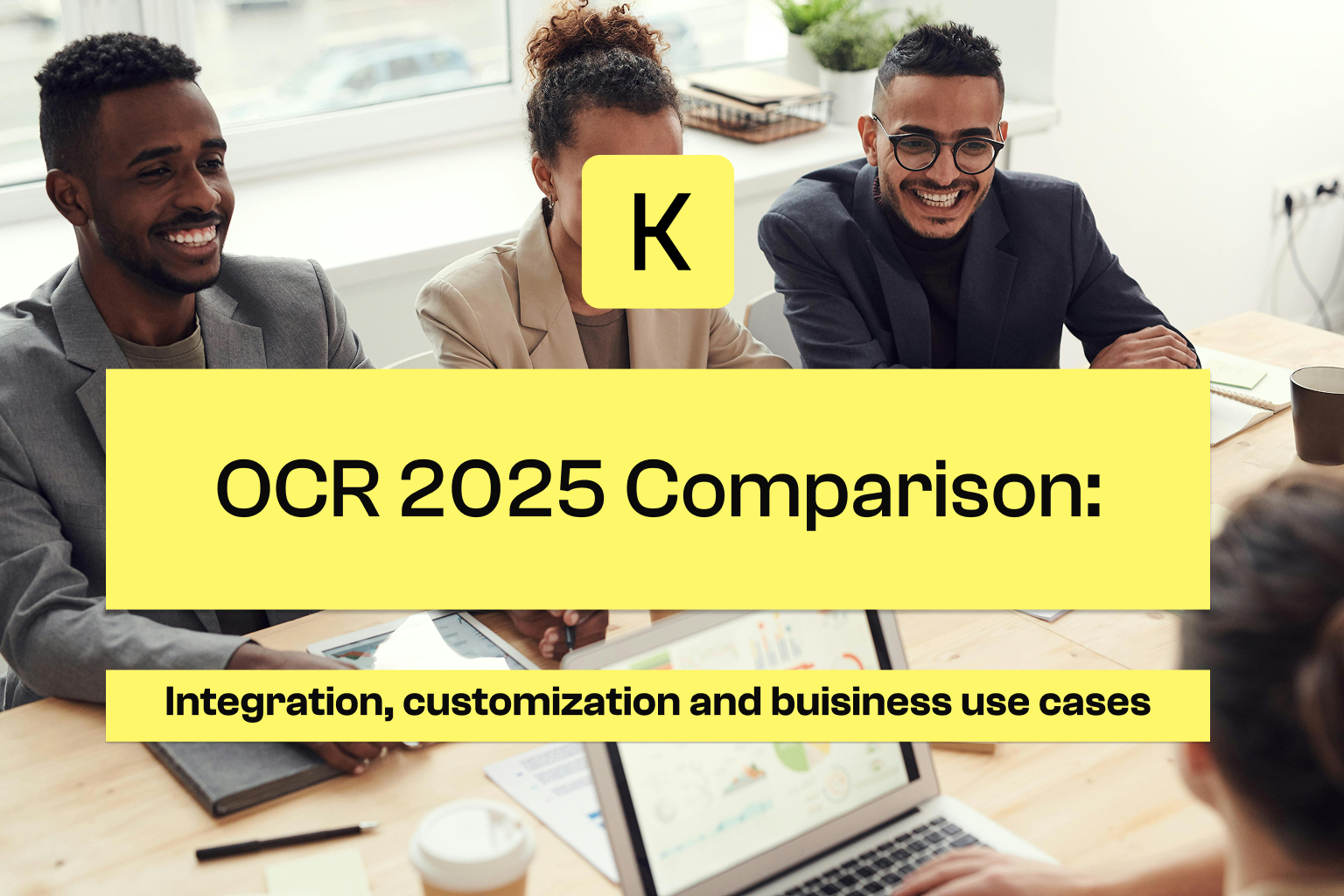.png)
How to Accurately Classify Documents with Intelligent OCR? A Concrete Use Case on ID Documents
Case study
Last update:
April 22, 2025
5 minutes
AI is shaking up the ranking of the best character recognition solutions. The conversion of image PDF files into Excel for your documents is now easier thanks to LLMs. Here are the points to keep in mind when choosing the right tool.
Compare OCR tools by accuracy, speed, cost, and flexibility for invoices, forms, and bank statements.
The quest for seamless document automation often begins with finding the right OCR software. But with promises of high accuracy and efficiency, how can you discern which tool will truly deliver? Focusing on structured document processing (invoices, forms, etc.), we aim to equip you with the knowledge to select a platform that maximizes your productivity. See how Koncile OCR Stands out with its robust feature set and focus on user experience.
What constitutes a good success rate for OCR? For simple, unique field recognition, such as the total amount on an invoice, a seller's name, or an account holder's name, a 99% success rate is achievable.
For complex fields, such as invoice line items with numerous columns, 95-96% can be reached.
If your results fall below these standards, it's worth testing another tool to evaluate potential quality gains. However, some documents remain complex, and technology may not yet overcome these challenges.
Vendors often advertise general success rates. However, use cases vary significantly. It is crucial to test the tool with your own documents. For reliable testing, gather a set of 20 documents of the same type to assess quality.
Processing speed depends on the OCR engine: traditional machine learning-based OCR or LLM-based OCR (for more details, refer to our article on this difference).
Traditional OCR tends to be faster, processing 1-4 seconds per document, compared to 5-10 seconds for LLM-based vision technology.
Tools like Koncile offers a hybrid model combining both techniques for optimal results.

Does the tool offer an API and SDK (software development kit) with comprehensive documentation? API output formats should be common and developer-friendly (JSON, XML, or CSV).
Native integrations with your tools, such as Google Drive, Slack, or your ERP, should also be considered.
Koncile OCR, for example, provides detailed documentation explaining how to connect software tools or web pages to retrieve structured data.
Beyond sending and receiving data, API functionalities may include: creating document extraction models and automatically routing them, selecting pages for processing, or excluding specific documents.
You are likely to have industry-specific documents to extract. Traditional machine learning tools are often rigid, relying on predefined field lists.
Koncile offers a document type library with modifiable default fields, saving time by providing a starting point while allowing easy customization.
OCR solutions will never achieve 100% field extraction accuracy. The goal is to automatically isolate documents with potential errors.
Check if the tool offers Confidence Scores To identify low-confidence files. Are scores applied at the individual field level? Are they reliable? Can a threshold be set for mandatory human review?
Can the tool trigger alerts based on specific conditions, such as unusually long documents, attachments, skewed photos, or irrelevant documents?
OCR quality testing should involve domain experts and end-users, not just technical teams.
Ensure the OCR platform is user-friendly for non-developers.
For LLM-based OCR, a field definition platform can be designed for domain experts to provide Specific Extraction Instructions.
For volumes between 1,000 and 10,000 pages per month, budgets range from €0.08 to €0.30 per page, depending on tool capabilities.
Open-source solutions like Tesseract can be used on the cloud, with only hosting costs. However, they require advanced development skills to structure data.

For adding fields or specifying output formatting, prefer LLM-enhanced OCR. Traditional OCR often has fixed field lists.
Example: extracting a vendor's name from a list of 5 companies is possible with LLM-based OCR, allowing you to define conditions within prompts.
Ensure the OCR provides automatic formatting (date, number, currency). LLM-powered OCR can enrich and categorize data (e.g., determining a city from a postal code, verifying data consistency, or answering simple questions).
Refer to technical documentation for more examples.
Advanced OCR should automatically classify documents by type (e.g., invoice vs. bank statement) and identify document vendors.
This is crucial for handling large volumes of varied documents. Some OCRs use AI models to classify documents and direct extraction to appropriate models.
OCR extracts unique information (e.g., ID holder's name, total invoice) and repeated/tabular information.
Some OCRs, like the Koncile Data Capture Tool, parse each table row and output a file with all rows.
Some tools specialize in Handwritten text extraction (HTR). Test tool performance with various handwriting styles. LLM-based or deep learning models perform better than traditional OCR. Some tools allow model training on custom datasets.
Many documents are scanned or photographed with varying quality. Good OCR includes pre-processing for contrast enhancement, perspective correction, and automatic document straightening.
The OCR should correctly detect and extract information from multiple languages without confusion. It should support special characters like currency symbols, diacritics, and non-Latin alphabets.
Short documents can span multiple pages. Good OCR should combine data across pages and reconstruct related information. This is crucial for invoices and bank statements. Ensure the tool can merge extracted data or segment pages automatically.
Data security is crucial, especially for sensitive documents. Ensure compliance with standards like GDPR, CCPA, and ISO 27001. Verify data encryption and access controls.
Understand where and how long processed documents are stored. For sensitive documents, choose solutions with immediate deletion or on-premises hosting. Check for integration with existing storage solutions.
For strict confidentiality or to comply with company policy, choose an on-premise solution. Verify hardware requirements and maintenance needs.
Resources
.png)
How to Accurately Classify Documents with Intelligent OCR? A Concrete Use Case on ID Documents
Case study

Compare 4 OCRs according to your business uses, types of documents, API integration, customization and business logic.
Blog

Complete comparison of the best OCR solutions: Performances, use cases, prices.
Blog